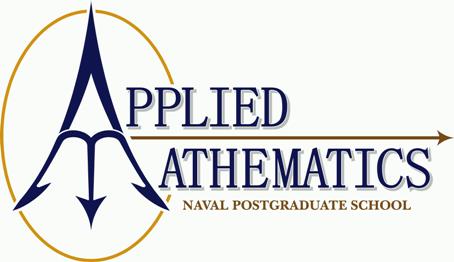Researchers in the NPS Department of Applied Mathematics are supporting an ambitious research effort to apply new approaches in high-fidelity computer modeling, including machine learning, that will take advantage of future computing capabilities and realize the potential for significant improvements in the accuracy of hurricane prediction.
Article by Matthew Schehl |
The Naval Postgraduate School (NPS) has received a major grant to explore a groundbreaking new way to model hurricanes and other extreme weather events.
The three-year grant from the Office of Naval Research, awarded in February, will allow mathematicians at NPS and the Naval Research Lab in Washington, D.C., (NRL-DC) to apply new approaches, including machine learning, to high-fidelity computer models to more accurately and efficiently model hurricanes. This will enable the Navy to best predict - and mitigate - these storms’ impact on marine battlespace environments the world over.
“This is a game-changer,” said Dr. Frank Giraldo, Distinguished Professor and Chair of the Applied Mathematics department and co-lead on the project along with Assistant Professor Anthony Austin, who leads the machine learning aspects of the project. “The novelty of our approach is, in my opinion, the only possible way to ever make weather models scalable on exascale computers.”
The Department of Energy is slated to bring the first exascale computers – next generation computers capable of a billion billion operations per second – online within the next few years. Given computing limitations, current weather models are incapable of fully drilling down to the necessary scale for accurate prediction.
Dramatic changes at the turbulent scale within the first 24 hours of a hurricane’s formation lead to its rapid intensification, with winds whipping up to at least 35 miles per hour and pressure plummeting 42 mbars. Current models are incapable of predicting rapid intensification at that scale, Giraldo said, which is really at the heart of why hurricane behavior and strength remain relatively unpredictable.
“That’s literally a killer because you don’t know where the storm is going to go,” he said. “If you don’t fix that problem, you won’t be able to predict or track hurricanes.”
Experts suggest hurricanes have increased in frequency and intensity in recent years, and point to climate change and warmer oceanic waters around the world as the culprit for stronger storms, presenting increased risk to coastal areas, Naval commands, and of course, vessels at sea.
It’s a problem the Navy is keenly aware of.
In his 2021 strategic guidance for the Navy and Marine Corps, Secretary of the Navy Carlos Del Toro specifically identified climate change as one of the most pressing challenges the services face today.
“It is a national security and warfighting imperative for the Department of the Navy to address the impact of climate change on our readiness, operations, and ability to fight and win,” Del Toro stated. “Climate change increases risk and exposes vulnerabilities to our people, installations, platforms and operations, and it impacts and expands the mission set our naval forces must support.”
In working closely with NRL-DC, the NPS team hopes to arm the Navy with an effective means to accurately predict hurricanes, from inception through evolution.
Doing so requires predicting cloud formation and behavior at the turbulent scale, which is impossible with current techniques. It’s not the actual computation of data, Giraldo says, but the communication of computation instructions that is too much for computers to handle. A “bottleneck” occurs when massive amounts of sub-processes attempt to communicate at that scale, he notes.
“Communication is what kills an application on a high-performance computer,” Giraldo explained. “We’re trying to fix that problem by saying, ‘OK, let’s do it in a way that minimizes communication. Let’s do the problem in a very different way.’”
Machine learning algorithms, a form of artificial intelligence, learn to perform tasks without being explicitly programmed to do them. For each of those sub-processes, the algorithm is able to independently make a prediction without being told to; i.e., without having to re-invent the wheel each time a prediction is made.
This essentially side-steps the communication bottleneck and opens the door for a whole new fidelity in making weather predictions at that scale. With a team of exceptional mathematicians and post-doctoral students, Giraldo says, NPS has the unique capability to team up on this project.
“Our group’s expertise is in high-performance computing,” he said. “We run on the biggest computers in the world and so we understand what it takes to run these models.
“We have built a really special program in computational mathematics in our NPS Applied Mathematics department,” Giraldo added. “Computational mathematics, scientific computing, really is at the heart of everything that’s done across the DOD.”









